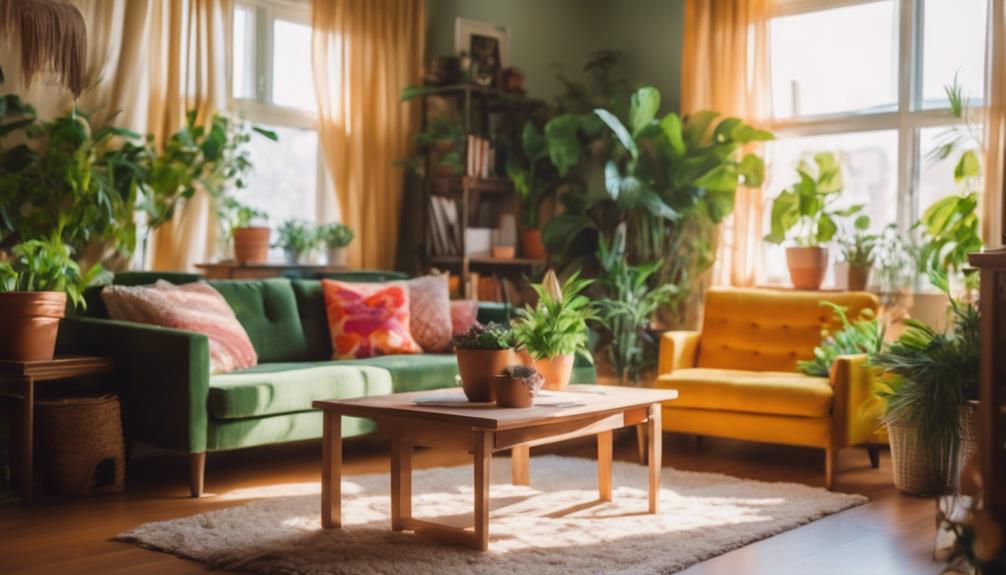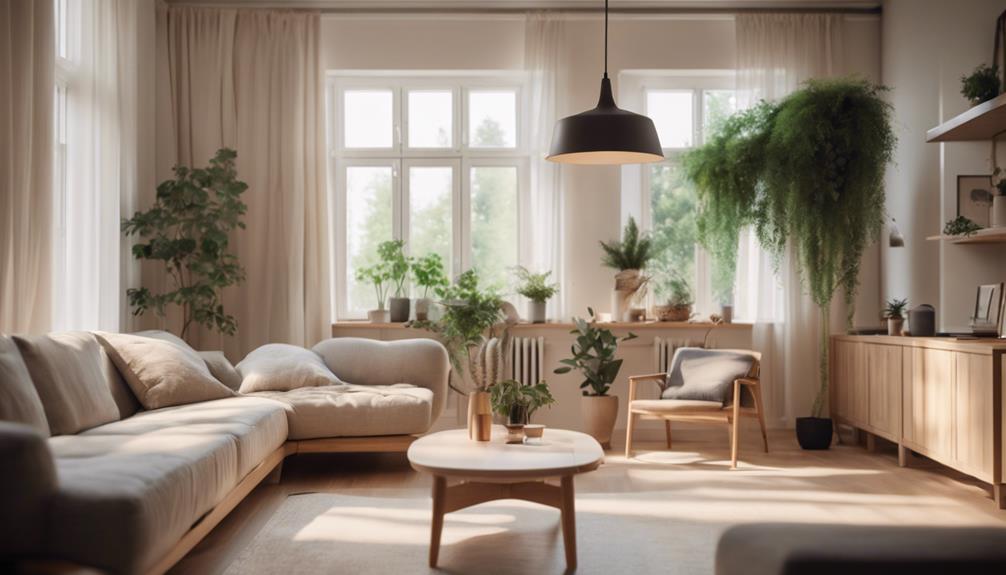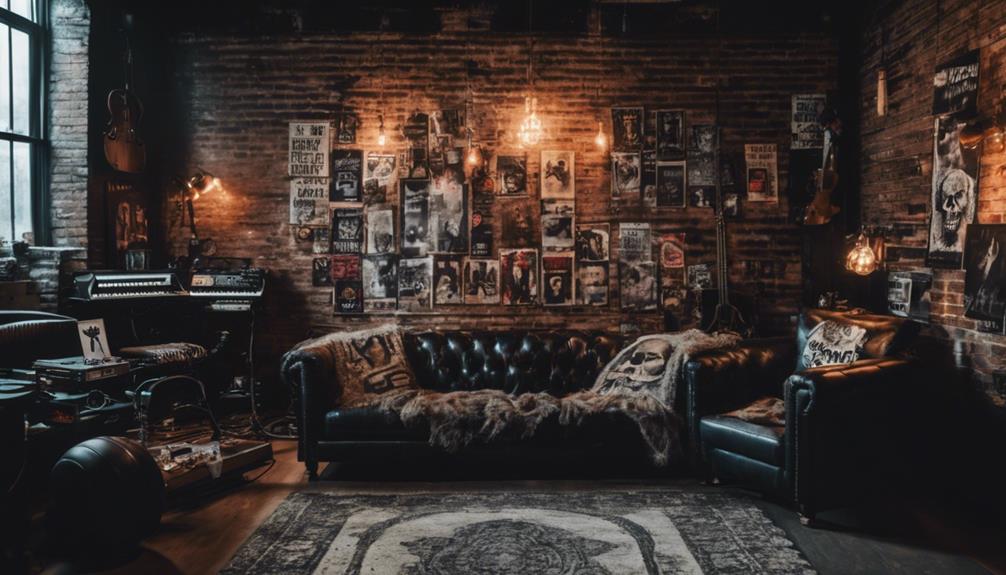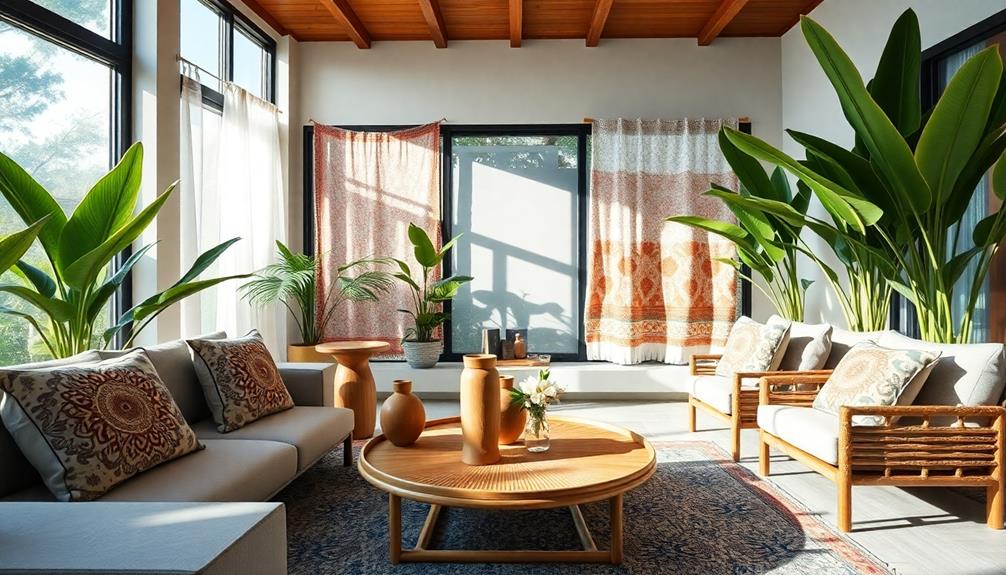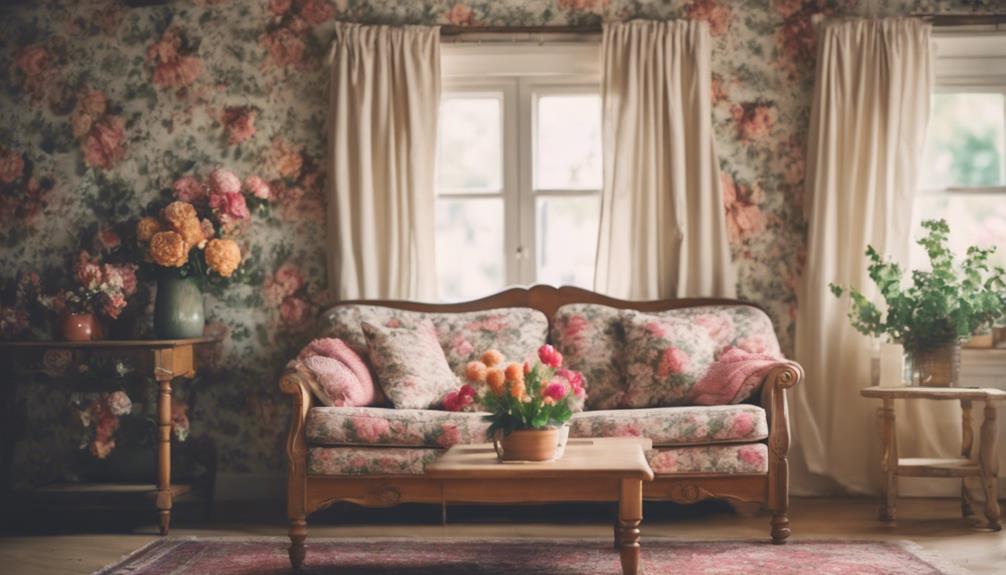This August, you can transform your home with some creative DIY projects that are fun and rewarding. Try upcycling an old dresser into a chic media console or make easy Roman shades for a fresh window look. You could even craft a burlap wreath for seasonal charm or repurpose furniture that reflects your style. Don't forget to refinish your patio furniture for inviting outdoor spaces. With simple tools and affordable materials, you'll create stunning updates that not only enhance beauty but also give you a sense of accomplishment. Discover more inspiring ideas to elevate your home effortlessly!
Key Takeaways
- Refresh your outdoor space by refinishing patio furniture for summer gatherings and comfort.
- Create DIY outdoor benches to enjoy cozy evenings in your backyard.
- Craft indoor wall art to add a personal touch to your living room decor.
- Build raised planter boxes to elevate your garden aesthetics and improve plant care.
Benefits of DIY Home Projects
DIY home projects not only save you money by cutting out labor costs, but they also empower you to create a space that truly reflects your personality and needs.
When you tackle these projects yourself, you can invest more in quality materials, enhancing the overall look of your home. You'll find that your creative choices directly influence the aesthetics and functionality of your space.
Completing DIY projects gives you a sense of accomplishment, boosting your self-esteem and satisfaction. There's something rewarding about transforming a blank canvas into a personalized haven.
Plus, customizing your environment allows you to cater to your specific needs, whether that's more storage, better lighting, or simply a fresh vibe.
Essential Tools for DIY Success
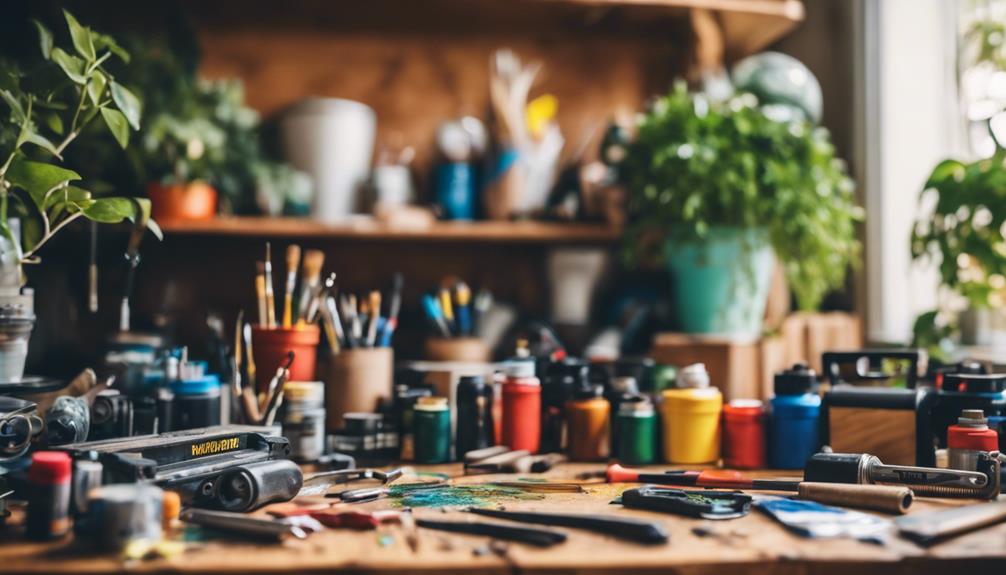
To successfully bring your creative visions to life, having the right tools at your disposal makes all the difference. For your DIY projects, start with essential tools like a hammer, screwdriver, and pliers. These basics can handle most common tasks effectively, ensuring you're equipped for a variety of jobs.
Don't underestimate the importance of a measuring tape. It's vital for ensuring precision in your projects, helping you determine lengths and dimensions for a perfect fit. A level tool is another must-have; it guarantees straight lines and even surfaces, especially when you're hanging shelves or pictures on the wall.
Safety is key in any DIY endeavor. Always wear appropriate safety gear, such as gloves and goggles, to protect yourself from potential injuries. If you plan to tackle more complex projects, consider investing in power tools like drills and saws. These can greatly increase efficiency and ease, allowing you to transform your home with greater ease.
With these essential tools in hand, you'll be well-prepared to take on any DIY project, bringing your creative ideas to life while enhancing your living space.
Budget-Friendly DIY Ideas
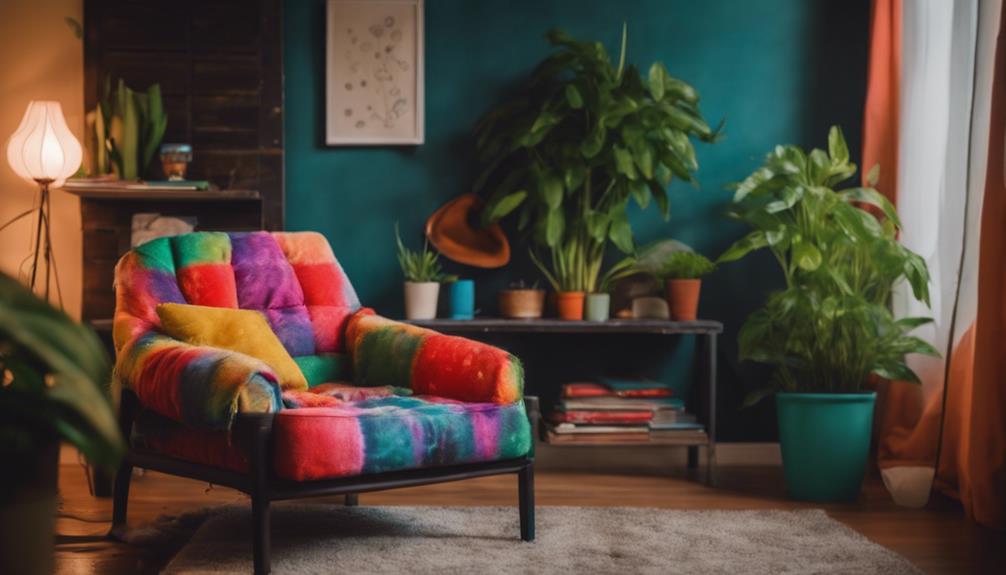
Looking for budget-friendly ways to refresh your home? You don't need to spend a fortune to elevate your home decor and outdoor space. Here are some simple yet impactful budget-friendly DIY ideas that can transform your surroundings without breaking the bank:
- Create an easy Roman shade to add a stylish touch to your windows.
- Upcycle old furniture with a DIY file cabinet makeover for a fresh look.
- Make the easiest burlap wreath ever—perfect for seasonal decor at under $20!
- Craft decorative books using thrifted materials or repurposed items to showcase your creativity on shelves.
These ideas allow you to express your creativity while ensuring your home feels inviting and stylish.
With a bit of time and effort, you can achieve a high-end look without the hefty price tag.
Seasonal DIY Inspirations
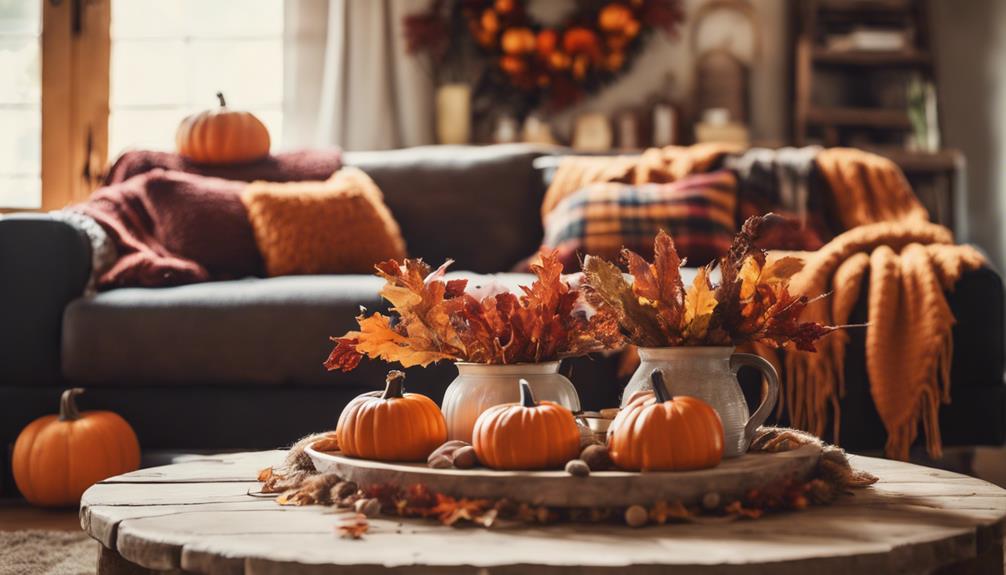
As summer winds down, it's the perfect opportunity to take on seasonal DIY inspirations that refresh your home and prepare it for the upcoming fall. Focus on projects that'll make a big difference in your living room and outdoor spaces. For instance, refinishing patio furniture or creating a DIY outdoor bench can enhance your outdoor living area, making it inviting for those cool autumn evenings.
Consider these DIY projects to boost your home's appeal:
| Project Type | Benefits |
|---|---|
| Indoor Wall Art | Revitalizes your living room |
| DIY Headboard | Adds additional style |
| Raised Planter Boxes | Improves garden aesthetics |
| Weatherproofing | Saves energy for fall |
| Outdoor Furniture | Extends outdoor usability |
Engaging in these projects not only transforms your space but also provides a rewarding sense of accomplishment. As you prepare for fall, think about how each project contributes to your home's comfort and style. Embrace the opportunity to refresh your surroundings and enjoy the satisfaction of your hard work!
Unique Decorative Projects
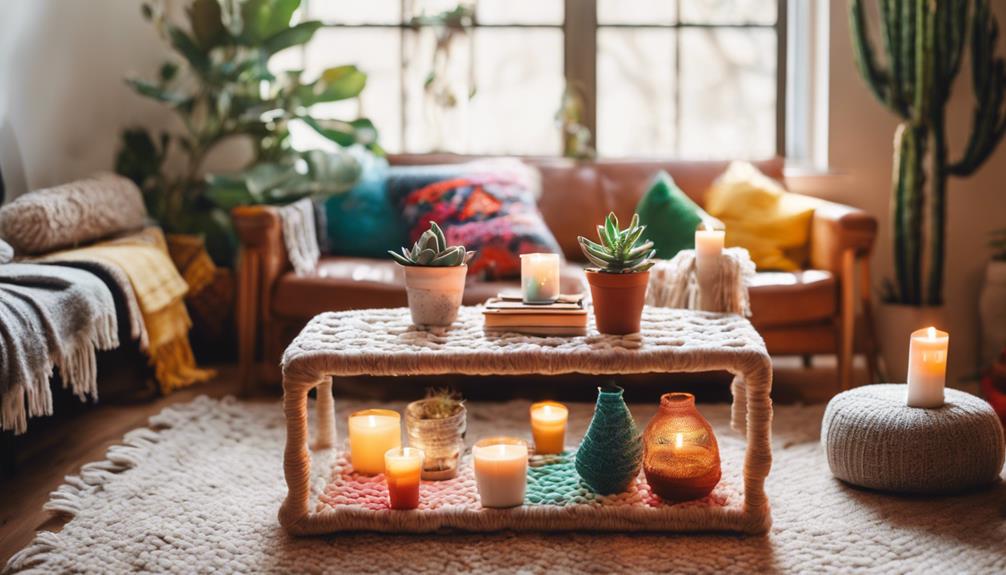
Unique decorative projects can effortlessly infuse personality and charm into your home, making it truly one-of-a-kind. You can elevate your space with unique decorative items that not only reflect your style but also create the illusion of a thoughtfully curated environment.
Here are some fun things to make:
- Vintage Travel Coat Rack: Repurpose old materials for a sustainable piece that adds character.
- Mosaic Wall Art: Use colorful tiles or reclaimed materials to create a stunning focal point.
- Decorative Books: Style these on shelves or tables to showcase your interests and enhance aesthetics.
- DIY Lace Mason Jars: Transform simple jars into elegant candle holders or vases for a charming touch.
Each of these projects offers a unique way to express your creativity while enhancing your home's decor. Immerse yourself in these DIY ideas and watch your space transform into a reflection of your personal taste!
Creative Furniture Makeovers
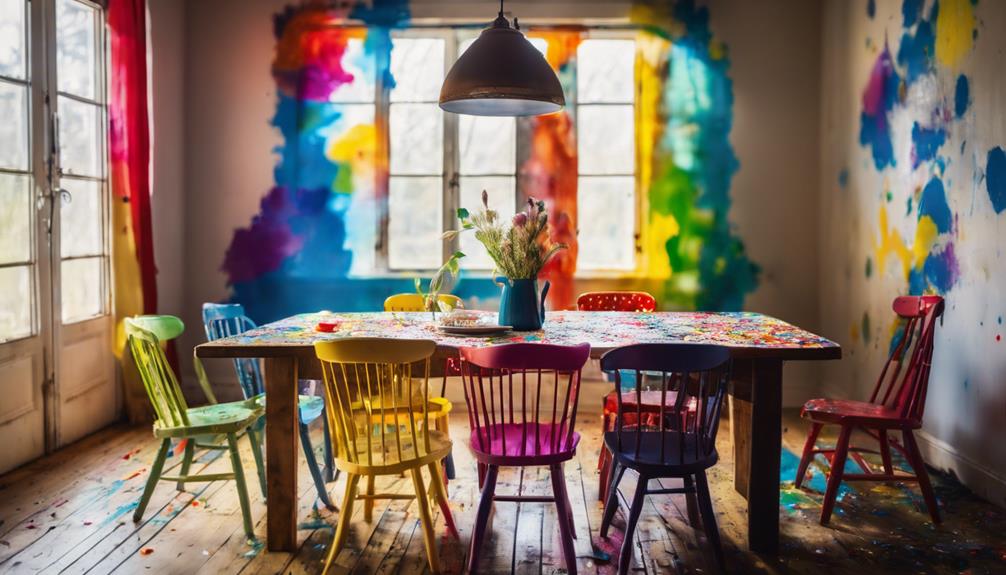
Transforming your furniture can elevate your home's style just as effectively as unique decorative projects, and it often brings a fresh perspective to your living space. One of the best aspects of furniture makeovers is that they're budget-friendly. You can breathe new life into old pieces without breaking the bank.
Consider a simple coffee table redo: a fresh coat of paint or new hardware can completely change the vibe of your living room.
DIY file cabinet makeovers can turn outdated storage solutions into chic decor, optimizing space and utility in your home office.
If you have vintage globes lying around, revamping them can yield unique decorative items that add nostalgia and character to your home.
Additionally, repurposed furniture projects, like transforming an old desk or door into a functional piece, promote sustainability while showcasing your creativity.
Each of these projects allows you to personalize your space, reflecting your style and values.
Get started on your furniture makeovers today, and watch how these updates can transform your home into a more inviting and stylish haven!
Conclusion
By diving into these DIY projects, you're not just enhancing your home; you're embracing your creativity and resourcefulness.
The truth is, every brushstroke and hammer strike tells a story of transformation. You'll find that as you revamp your space, you're also revitalizing your spirit.
So go ahead, take that leap into creativity this August. The results won't only beautify your home but also foster a sense of accomplishment that'll resonate long after the projects are complete.
